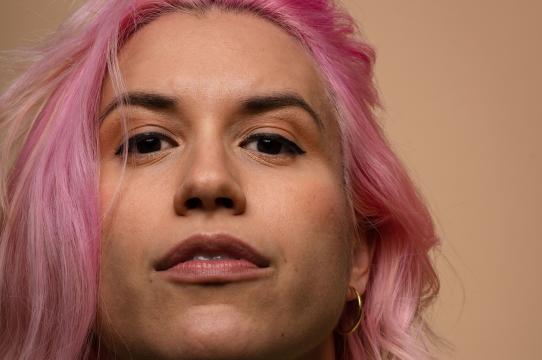Marina Magalhães started taking dance lessons when she was five years old. She loved to dance and planned to make it her career. So, when her 7th grade teacher, Ms. Girkin, asked the class to write a list of life goals, Magalhães wrote that she wanted to be a professional dancer and choreographer and get a full scholarship to attend UCLA to study dance.
And that’s more or less what she’s done (she was awarded the International Moss Scholarship, given annually to two outstanding international students in the UCLA School of Arts & Architecture to cover 90% of their school fees).
Now Magalhães is a new Assistant Professor of Dance at UC Santa Cruz Department of Performance, Play & Design. One of the classes she’ll be teaching is an inaugural Samba & Salsa course on the history, culture, and movement technique of these forms, which she looks forward to. Magalhães grew up training in classical ballet and studio jazz in the formal dance classroom, while simultaenously learning Latin social dances like Samba, Forró, and Cumbia in her other dance classrooms– family birthday parties and backyard barbecues.
Magalhães loved them all — except when her family temporarily moved to Spain and enrolled her in the Royal Academy of Ballet in Madrid. The teacher used a cane to make the little girls jump higher and twirl faster, which, understandably, sucked the love she had of ballet right out of her. After that, she gave ballet up for several years.
Many years later, a teacher in graduate school brought that love for ballet back by approaching class with a decolonial lens, encouraging dancers to find possibilities for movement and expression from a place of care and honoring their bodies’ limitations.
This kind of inclusive pedagogy is precisely what Magalhães has been cultivating in her classes for over thirteen years. Dance can be a compelling way to bring people together, she thinks, and she finds Samba particularly powerful. Magalhães grew up speaking Portuguese, Spanish, and English, but she calls Samba her native language and says it’s deeply political.
“When you study the history and evolution of Samba, you are studying the history and evolution of Brazil and of the enslavement of people forcibly brought from Africa to Brazil and their ability to survive in the face of unspeakable violence and the incredible will and spirit of the body to carry forward,” she said. “Knowledge doesn’t just live in books — it lives in the body, and that is precisely what Samba is. It is a form of knowledge that people passed on through dance, song, and ritual, and that is why we still practice it today.”
Magalhães says usually job openings for dance professors ask for a focus on contemporary dance, a term commonly defined in academia by limiting Eurocentric ideas of what constitutes “contemporary”. But this year, she saw three openings for practitioners of non-Western dance forms, including the one at UC Santa Cruz.
Magalhães had never been to Santa Cruz before her job interview. When she picked up a rental car in San Jose Airport and drove through the redwoods to get to her beachside hotel, she was already half-way sold. And then she got on campus.
“The more I actually talked with my colleagues, the more I felt this deep resonance with the things I was interested in,” she said. “There was so much enthusiasm, genuine enthusiasm and engagement with my work and my research.”
Magalhães says Santa Cruz has an incredible local dance scene, especially of African and Latin diasporic forms, and she hopes to connect it with the campus.
“There's such a long-standing, thriving, tight knit community of people who love dance here,” she said. “They really understand the power of it and show up to everything. As a community-rooted artist, I feel committed to uplifting their presence and encouraging my UCSC students to learn from/with them.”
10/2/2023


